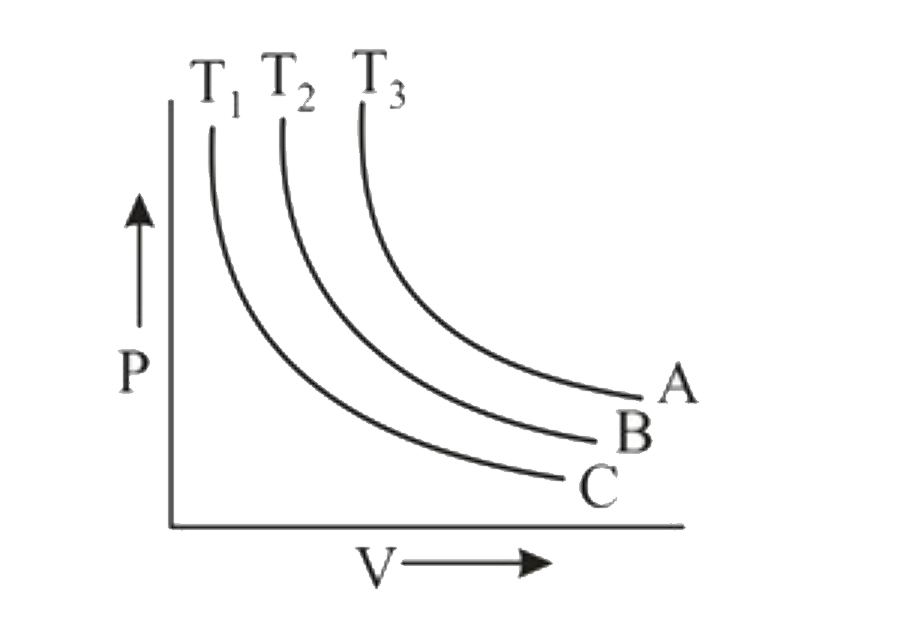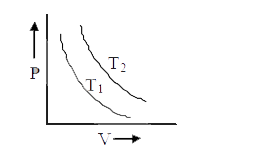Two identical objects A and B are at temperature TA and TB respectively. Both objects are placed in a room with perfectly absorbing walls maintained at temperature T(TA>T>TB)
Statement-1: The objects A and B attain the temperature T eventually.
Statement-2: A only emits radiation while B only absorbs until radiation both attain the temperature T
‘ A ’ only emits radiations while B only absorbs them until both attain temperature
A loses more radiations than it absorbs while B absorbs more radiations that it emits until temperature T is attained
Both A and B only absorb radiations until they attain temperature T
Both A and B only emit radiations until they attain temperature T
The correct Answer is:B
Step by step video, text & image solution for Two identical objects A and B are at temperature T_(A) and T_(B) respectively. Both objects are placed in a room with perfectly absorbing walls maintained at temperature T(T_(A)gt TgtT_(B)) Statement-1: The objects A and B attain the temperature T eventually. Statement-2: A only emits radiation while B only absorbs until radiation both attain the temperature T by Physics experts to help you in doubts & scoring excellent marks in Class 11 exams.
Updated on:21/07/2023Topper's Solved these Questions
- TRANSMISSION OF HEATBOOK - ERRORLESS CHAPTER - TRANSMISSION OF HEATEXERCISE - Radiation (Newton s Law of Cooling)
37 Videos
- TRANSMISSION OF HEATBOOK - ERRORLESS CHAPTER - TRANSMISSION OF HEATEXERCISE - Critical Thinking
36 Videos
- TRANSMISSION OF HEATBOOK - ERRORLESS CHAPTER - TRANSMISSION OF HEATEXERCISE - Radiation (Wein s law)
30 Videos
- THERMOMETRY, THERMAL EXPANSION AND CALORIMETRY BOOK - ERRORLESS CHAPTER - THERMOMETRY, THERMAL EXPANSION AND CALORIMETRY EXERCISE - Self Evaluation Test
15 Videos
- UNITS, DIMENSION & MEASUREMENTSBOOK - ERRORLESS CHAPTER - UNITS, DIMENSION & MEASUREMENTSEXERCISE - All Questions
333 Videos
Similar Questions
Knowledge Check
Two identical objects A and B are at temperature TA and TB respectively. Both objects are placed in a room with perfectly absorbing walls maintained at temperature T(TA>T>TB).
Statement-1: The objects A and B attain the temperature T eventually
Statement-2: A only emits radiation while B only absorbs until radiation both attain the temperature TAStatement-1 is true, statement-2 is true and statement-2 is correct explanation for statement-1.BStatement-1 is true, statement-2 is true and statement-2 is NOT the correct explanation for statement-1.CStatement-1 is true, statement-2 is false.DStatement -1 is false, statement -2 is true.Two identical objects A and B are at temperatures TA and TB. Respectively. Both objects are placed in a room with perfectly absorbing walls maintained at a temperature T(TA>T>TB). The objects A and B attain the temperature T eventually. Select the correct statements from the following:
AA only emits radiation while B only obsorbs it until both attain the temperature TBA loses more heat by radiation than it absorbs, while B absorbs more radiation than it emits, until they attain the temperature TCBoth A and B only absorb radiation, but do not emit it, until they attain the temperature TDEach object continuous to emit and absorb radiation even after attaining the temperature T.If two gases A and B and temperatures TA and TB respectively have identical Maxwellian plots, then which of the following statements is true?
ATB=TABMB=MACTAMB=TBMADGases A and B may be O2 and SO2 at 27∘C and 327∘C respectively.
Three isothermal plots (P versus V) A, B and C are plotted at three temperature T1,T2andT3 respectively

The correct order of the temperature will be
View SolutionA perfectly black body emits radiation at temperature T1K. If is to radiate at 16 times this power, its temperature T2K should be
View SolutionThe rate at which a black body emits radiation at a temperature T is proportional to
View SolutionThe rate at which a black body emits radiation at a temperature T is proportional to
View SolutionTwo stars A and B of surface area Sa and Sb & temperature TaandTb glow red and blue respectively. Choose the correct option.
View Solution

